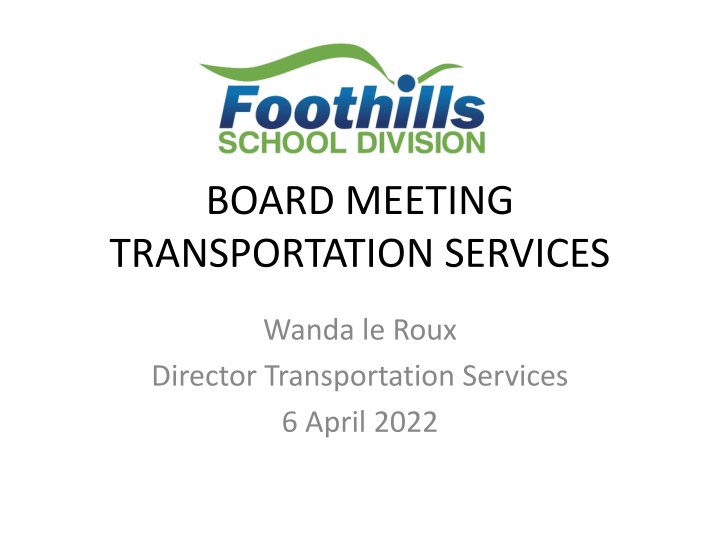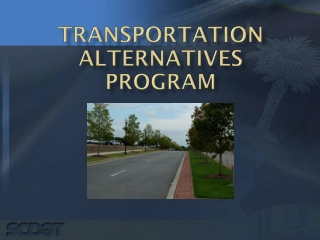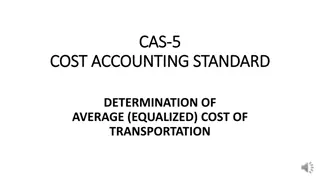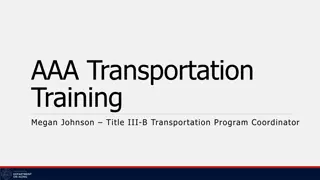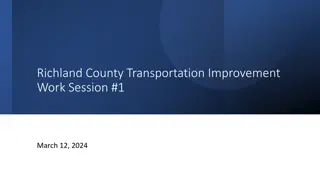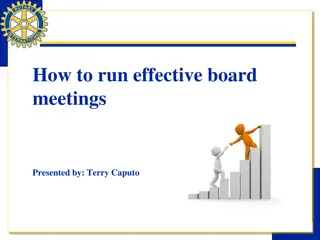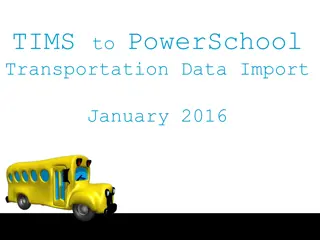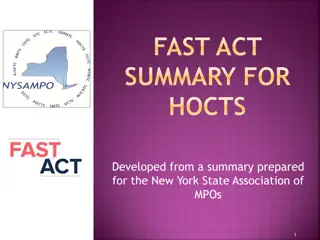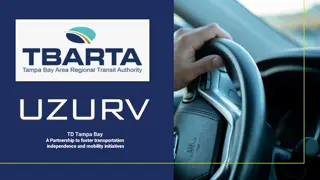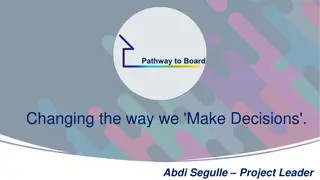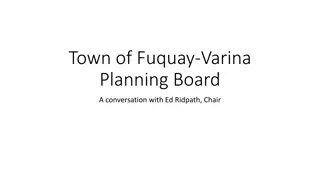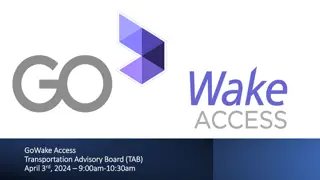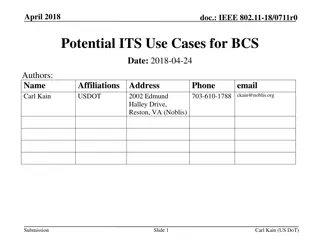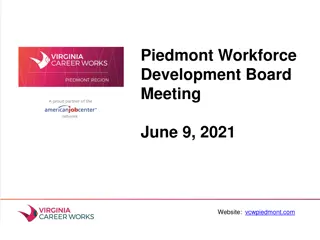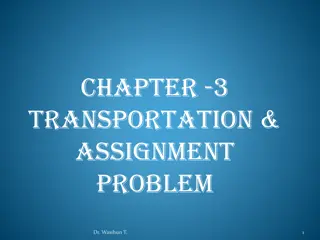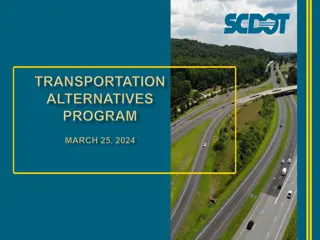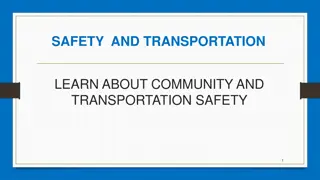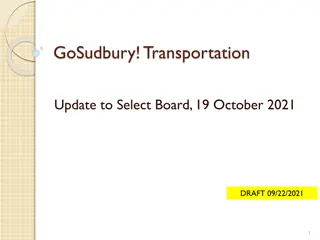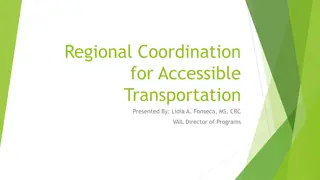Challenges and Strategies in Transportation Services Board Meeting
The board meeting for transportation services highlighted staffing challenges, operational costs, and provincial developments. Issues discussed included staffing availability, field trip management, parent handbook establishment, and financial struggles due to funding discrepancies. Strategies for addressing these challenges were proposed, emphasizing the need for efficient resource management and increased transparency with stakeholders.
Download Presentation

Please find below an Image/Link to download the presentation.
The content on the website is provided AS IS for your information and personal use only. It may not be sold, licensed, or shared on other websites without obtaining consent from the author.If you encounter any issues during the download, it is possible that the publisher has removed the file from their server.
You are allowed to download the files provided on this website for personal or commercial use, subject to the condition that they are used lawfully. All files are the property of their respective owners.
The content on the website is provided AS IS for your information and personal use only. It may not be sold, licensed, or shared on other websites without obtaining consent from the author.
E N D
Presentation Transcript
BOARD MEETING TRANSPORTATION SERVICES Wanda le Roux Director Transportation Services 6 April 2022
Outline 1) Staffing 2) Parent Handbook 3) Operational costs 4) Cameras and GPS 5) Provincial developments 6) Q&A
Staffing Availability Challenge Expecting high number of retirements in June Routes 72 routes everyday 7 routes open for medium to long term medicals using 7 spare drivers full time. 2-3 routes per week with COVID +/Symptoms 12 Spare drivers in total only 5 available add hock.
Staffing Cont. Field Trips Begging to increase in numbers. Only able to help between runs Very rarely have a spare driver to cover a field trip that straddles the route times. Training school staff in: Budgeting Booking trips - times How many buses seating capacity Driver & Teacher partnership
Parent Handbook Reasons Establish the relationships within transportation systems Driver responsibility/accountability Parent responsibility/accountability School responsibility/accountability What to expect when using FSD transportation.
Parent Handbook Cont. Thorough document reduce surprises Public document Commit to by parents reduces misconceptions and miscommunications Consultation with schools Publication
Costs In trouble big trouble! Provincial Government using 2012/2013 school year as basis for grant funding (Page 7 STTF) 2 years ago 4.5% increase Next year another 4.6% increase no new money for FSD overall.
Costs Cont. Comparisons 2012/13 vs 2021/2022 Number of routes 67 vs 72 Number of eligible students 3,460 vs 4,027 = 16.3% in crease Urban went from 1,175 vs 1,784 Rural went from2,284 vs 2,243 Bus prices $85,130 vs $135,000 = 37% increase (17% since 2020/2021) Fuel prices $1.22 vs $1.89 = 36% increase (16% since 2020/2021)
Costs Cont. Wages highest pay scale per hour $21.49 vs $22.35 = 3.85% increase Inflation CPI Feb 2021 vs Feb 2022 All items = 5.5% Education = 4.7% Transportation = 10.1% Challenges Parts - Cost & Availability Oil Cost & Availability DEF Cost & Availability
Camera + GPS project Is being implanted by other school divisions becoming best practice Recommended by insurance companies 87 buses Funding Challenge Camera systems Reasons Fly-by s Student behavior Driver training Emergencies 2 stops sign cameras + 3-4 interior cameras $3,800 - $4,000 per bus $332,000 for current fleet
Camera + GPS project Cont. GPS Reasons Find in an emergency Remote diagnostics Where is my bus Bus Passes Driver training 89 vehicles 2 ways to buy both 3 year contracts Upfront equipment cost and then monthly Equipment is divided into monthly cost $45,000 per year
Provincial Developments Department of Education Provincial Student Transportation Task Force. Report issued May 2021 A three-phase action plan Phase 1 2 Audit Teams 12 Divisions Working group variety of topics MELT Bus driver shortages Reduce Fly-by s
Provincial Developments Cont. Phase 2 working to enhance regional cooperation among school divisions examine a provincial purchasing program for buses, fuel, insurance and parts. Phase 3 a new student transportation funding model will be developed for the 2023/24 school year.
